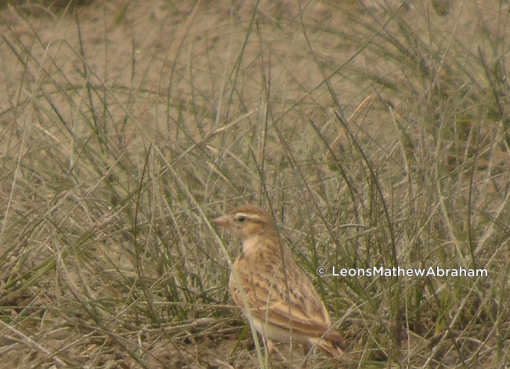Leons Mathew Abraham¹, Rupom Bhaduri² and Jaydev Mandal³
- Junior Research Fellow, Khanapara Veterinary College, College of Veterinary Science, AAU, Khanapara, Guwahati-781022, 2. Research Scholar, Centre For the Environment, IIT Guwahati-781022 & 3. Assistant Professor, Department of Zoology, Madhab Choudhury College, Barpeta-781301
Introduction
Guwahati, the largest city of the Northeastern states of India is one of the most biodiverse cities in the country (Purakayastha, 2018). The Brahmaputra and the Nilachal hill ranges provide a wide range of habitats, natural and human modified, in the form of wetlands, forest patches, chars, grasslands, agricultural fields and human settlements. These mosaic patches of habitats harbor several species of birds or avifauna (Das, 2011; Saikia et al., 2015). Despite being a bustling city, a numbers of lakes (beel in Assamese), small to large, are present within Guwahati (ref). The role of these urban wetlands is multifarious in controlling urban floods, groundwater recharge, bioremediation, maintaining biodiversity, providing livelihood etc. (Min et al., 2010; Acreman and Holden, 2013; Bhatia and Goyal, 2013). However, over the course of time, all such wetlands underwent several threats to its area and water quality due to continuous anthropogenic pressures (Bhattacharyya and Kapil, 2010).
The Silsako beel in the Kamrup Metropolitan district is one such lesser known wetlands located in the heart of the city (Sahoo and Sreeja, 2014). It is surrounded by expanding areas of urban settlements. However, the water of the beel has got unfathomably polluted as it continuously receives silt, solid waste and sewage from the adjacent areas. Also, there has been a steep climb in the rise of build-up land around the beel which has compromised with the ecological space of the wetland. Although, the beel is locally known to host several species of birds, there has been no literature to understand the various species present and the habitat it offers. Thus, a study was conducted with an objective to scientifically document the diversity of avifauna in the Silsako beel. Findings of the study have been tabulated in the form of a checklist, providing status (IUCN, Residential and Abundance) for each of the species.
Methods
Study area
Silsako beel is located within the geographical coordinates of 26Ú 172 153 N latitude and 91Ú 502 11.63 E longitude in the heart of Guwahati city. The beel is surrounded by Satgaon, Hengrabari and Methgaria where most of the settlements exist. This area is also distantly bordered by a protected area Amchang Wildlife Sanctuary in the east, Narengi in the north, VIP road connecting Narengi and Six mile in the west and Chachal to its west (Kar et al., 2014).
Field survey
Field surveys were done on foot by walking around and along the wetland and repeated on random days for three years from November, 2018 to November, 2020. A total of 30 field visits were carried out, that comprised 125 hours of observation.
The surveys for recording the birds were done without giving emphasis to find a particular species. All birds seen or heard were identified using field guide/s (Grimmet et al. 1999). The equipment used for the survey were Olympus 10 x 50 DPS I binoculars and a Camera- Sony HSC 300. All the checklists were submitted to eBird.org (www.ebird.org) a citizen science platform for people who take interest in birds and the records are made publicly accessible. All the species in this checklist are corroborated with photographs and videos combined with field notes.
Results
The survey done in the past three years resulted in the documentation of 111 species of birds (Table 1). Despite the poor water quality, the beel supported a diversity of birds belonging to 13 families, out of which 30 species are migratory. Furthermore, we found that this lake is occasionally visited by Greater Adjutant (Leptoptilos dubius) a species which falls under the IUCN (International Union for Conservation of Nature) Red list category Endangered (EN) species. Two species, Lesser Adjutant (Leptoptilos javanicus) and Oriental Darter (Anhinga melanoglaster) which are categorized as Near Threatened (NT) were also recorded from the beel
Conclusion
This checklist construes that Silsako beel is rich in avifauna despite the ongoing threats to its ecosystem. The poor water quality has made the place unsuitable for migratory waterfowl in the past few years, which was evident from the low count of water birds during the survey. However, other migratory species like waders, shrikes, chats and warblers, which do not completely depend on water for survival, are still fairly common in and around the wetland. The beel is currently being utilized in an unsustainable manner which can lead to further degradation of its ecology in the near future if not maintained well. This annotated checklist thus indicates the ecological importance of the habitat offered by the beel and can help in developing further conservation strategies from a policy perspective.
Acknowledgement
We would like to thank the team of BioNE online magazine for giving us an opportunity to share our work.
References
Acreman, M. and Holden, J. (2013). ‘How Wetlands Affect Floods’, Wetlands, 33: 773–786. doi: 10.1007/s13157-013-0473-2.
Bhatia, M. and Goyal, D. (2013). ‘Analyzing Remediation Potential of Wastewater Through Wetland Plants : A Review’, Environmental Progress & Sustainable Energy, doi: 10.1002/ep.
Bhattacharyya, K. G. and Kapil, N. (2010). ‘Impact of urbanization on the quality of water in a natural reservoir : a case study with the Deepor Beel in Guwahati city , India’, Water and Environment Journal, 24: 83–96. doi: 10.1111/j.1747-6593.2008.00157.x.
Das, J. (2011).Species diversity of water birds in Deepor Beel, Assam, Journal of Research in Biology, 1(5): 363-369.
Sullivan, B.L.; Wood, C.L.; Iliff, M.J.; Bonney, R.E.; Fink, D. and Kelling, S. (2009). ‘eBird: a citizen-based bird observation network in the biological sciences, Biological Conservation. 142: 2282-2292.
Grimmet, R.; Inskipp, C. and Inskipp, T. (1999). ‘Pocket Guide to the Birds of the Indian Subcontnent’. Oxford University Press, New Delhi.
Kar, A., Goswami, N. K. and Saharia, D. (2014). ‘Biological resources of Silsako Wetland in Kamrup Metro District of Assam : uses of macrophytes and icthyofauna’, Pleione, 8(1).: 79–88.
Min, J.; Perkins, D. B. and Jawitz, J. W. (2010). ‘Wetland-Groundwater Interactions in Subtropical Depressional Wetlands, Wetlands, 30: 997-1006. doi: 10.1007/s13157-010-0043-9.
Purakayastha, J. (2018).‘Urban biodiversity: an insight into the terrestrial vertebrate diversity of Guwahati, India, Journal of Threatened Taxa, 10: 12299-12316.
Sahoo, S. N. and Sreeja, P. (2014).‘A methodology for determining runoff based on imperviousness in an ungauged peri-urban catchment, Urban Water Journal, doi: 10.1080/1573062X.2013.765491.
Saikia, M. K. et al. (2015).‘New records of forest birds in North and South Bank Landscapes of Assam , India, Journal of New Biological Reports, 4(2): 169-176.
Table 1: Comprehensive checklist of birds from the Silsako wetland, surveyed during 2018 to 2020
| BIRDS | IUCN STATUS | RESIDENTIAL STATUS | ABUNDANCE |
| Anseriformes | |||
| Anatidae (Ducks, geese, swans) | |||
| 1. Lesser Whistling Duck | LC | R | O |
| Columbiformes | |||
| Columbidae (Pigeons) | |||
| 2. Spotted Dove | LC | R | C |
| 3. Red-collared Dove | LC | R | O |
| 4. Eurasian-collared Dove | LC | R | O |
| 5. Yellow-footed Green Pigeon | LC | R | C |
| Cuculiformes | |||
| Cuculidae (Cuckoos) | |||
| 6. Greater Coucal
|
LC | R | FC |
| 7. Lesser Coucal | LC | R | O |
| 8. Asian Koel | LC | R | C |
| 9. Plaintive Cuckoo | LC | R | C |
| Gruiformes | |||
| Rallidae | |||
| 10. White-breasted Waterhen | LC | R | C |
| 11. Grey-headed Swamphen | LC | R | C |
| 12. Common Moorhen | LC | R | C |
| Pelecaniformes | |||
| Ciconiidae (Storks) | |||
| 13. Greater Adjutant Stork | EN | R | R |
| 14. Lesser Adjutant Stork | NT | R | R |
| 15. Asian Openbill | LC | R | C |
| Ardeidae (Herons) | |||
| 16. Yellow Bittern | LC | R | C |
| 17. Cinnamon Bittern | LC | R | C |
| 18. Black-crowned Night Heron | LC | R | FC |
| 19. Indian Pond Heron | LC | R | C |
| 20. Purple Heron | LC | R | C |
| 21. Great Egret | LC | O | |
| 22. Intermediate Egret | LC | FC | |
| 23. Little Egret | LC | O | |
| 24. Cattle Egret | LC | R | C |
| 25. Little Cormorant | LC | R | C |
| 26. Oriental Darter | NT | R | O |
| Charadriiformes | |||
| Charadtiidae (Plovers and Lapwings) | |||
| 27. Grey-headed Lapwing | LC | M | C |
| 28. Red-wattled Lapwing | LC | R | C |
| Rostratulidae (Painted Snipes) | |||
| 29. Greater Painted Snipe | LC | R | O |
| Jacanidae(Jacanas) | |||
| 30. Bronze-winged Jacana | LC | R | C |
| Scolopacidae (Sandpipers and allies) | |||
| 31. Temmicks Stint | LC | M | C |
| 32. Common Snipe | LC | M | C |
| 33. Common Sandpiper | LC | M | C |
| 34. Wood Sandpiper | LC | M | FC |
| 35. Green Sandpiper | LC | M | C |
| Accipiteriformes | |||
| Accipitridae (Kites, hawks and eagles) | |||
| 36. Oriental Honey Buzzard | LC | R | C |
| 37. Booted Eagle | LC | M | O |
| 38. Black Kite | LC | R | C |
| 39. Black-eared Kite | LC | M | C |
| Stringiformes | |||
| Tytonidae (Barn Owls) | |||
| 40. Barn Owl | LC | R | O |
| Stringidae (Owls) | |||
| 41. Brown Hawk Owl | LC | R | O |
| 42. Asian Barred Owlet | LC | R | FC |
| 43. Spotted Owlet | LC | R | C |
| 44. Collared Scops Owl | LC | R | C |
| Bucerotiformes | |||
| Upupiae (Hoopoes) | |||
| 45. Eurasian Hoopoe | LC | M | O |
| Piciformes | |||
| Picidae (Woodpeckers) | |||
| 46. Eurasian Wryneck | LC | M | C |
| 47. Fulvous-breasted Woodpecker | LC | R | C |
| 48. Lesser Flameback
Ramphastidae (Toucans and barbets) |
LC | R | C |
| 49. Lineated Barbet | LC | R | C |
| 50. Blue-throated Barbet | LC | R | C |
| 51. Coppersmith Barbet | LC | R | C |
| Coraciiformes | |||
| Meropidae (Bee-eaters) | |||
| 52. Green Bee-eater | LC | R | C |
| 53. Blue-tailed Bee-eater | LC | M | C |
| 54. Indochinese Roller | LC | R | C |
| Acledinidae (Kingfishers) | |||
| 55. Common Kingfisher | LC | R | C |
| 56. White-throated Kingfisher | LC | R | C |
| Falconiformes | |||
| Falconidae | |||
| 57. Common Kestrel | LC | M | FC |
| Pscittaciformes | |||
| Pscitticulidae (Old world parrots) | |||
| 58. Rose-ringed Parakeet | LC | R | C |
| Passeriformes | |||
| A. Camphiphagidae (Minivets and cuckooshrikes) | |||
| 59. Large Cuckooshrike | LC | R | O |
| B. Oriolidae (Orioles | |||
| 60. Black-hooded Oriole | LC | R | C |
| C. Aegithinidae (Ioras) | |||
| 61. Common Iora | LC | R | C |
| Dicruridae (Drongos) | |||
| 62. Black Drongo | LC | R | C |
| 63. Hair-crested Drongo | LC | R | O |
| Laniidae (Shrikes) | |||
| 64. Brown Shrike | LC | M | C |
| 65. Long-tailed Shrike | LC | M | FC |
| 66. Grey-backed Shrike | LC | M | C |
| Corvidae (Crows and jays) | |||
| 67. Rufous Treepie | LC | R | C |
| 68. House Crow | LC | R | C |
| 69. Large-billed Crow | LC | R | C |
| Dicaeidae (Flowerpeckers) | |||
| 70. Plain Flowerpecker | LC | R | C |
| 71. Crimson Sunbird | LC | R | C |
| 72. Purple Sunbird | LC | R | C |
| Ploceidae (Weavers) | |||
| 73. Baya Weaver | LC | R | FC |
| Estrildidae (Waxbills) | |||
| 74. Scaly-breasted Munia | LC | R | C |
| 75. Chestnut Munia | LC | R | C |
| Passeridae (Sparrows) | |||
| 76. House Sparrow | LC | R | C |
| 77. Eurasian Tree Sparrow | LC | R | C |
| Mottacilidae (Wagtails and Pipits) | |||
| 78. Olive-backed Pipit | LC | M | FC |
| 79. Rosy Pipit | LC | M | C |
| 80. Paddyfield Pipit | LC | R | C |
| 81. Richards Pipit | LC | M | C |
| 82. Citrine Wagtail | LC | M | C |
| 83. White Wagtail | LC | M | C |
| Paridae (Tits, chickadees) | |||
| 84. Cinereous Tit | LC | R | C |
| Alauidae (Larks) | |||
| 85. Bengal Bushlark | LC | R | C |
| Cisticolidae (Cisticolas) | |||
| 86. Zitting Cisticola | LC | R | C |
| 87. Plain Prinia | LC | R | C |
| 88. Common Tailorbird | LC | R | C |
| Locustellidae (Bush warblers) | |||
| 89. Rufous-rumped Grasshopper Warbler | |||
| 90. Striated Grassbird | LC | R | C |
| Acrocephalidae (Brush, reed and swamp warlers) | |||
| 91. Thick-billed Warbler | LC | M | C |
| Hirundinidae (Swallows) | |||
| 92. Red-rumped Swallow | LC | M | FC |
| 93. Streaked Swallow | LC | M | O |
| 94. Barn Swallow | LC | M | C |
| 95. Grey-throated Martin | LC | R | C |
| Pycnonotidae (Bulbuls) | |||
| 96. Red-whiskered Bulbul | LC | R | C |
| 97. Red-vented Bulbul | LC | R | C |
| Phylloscopidae (Old world leaf warblers) | |||
| 98. Dusky Warbler | LC | R | C |
| 99. Tickells Leaf Warbler | LC | R | C |
| Zosteropidae (white-eyes) | |||
| 100. Indian White-eye | LC | R | C |
| Leiothrichidae ( Babblers, laughing thrushes, and allies) | |||
| 101. Jungle Babbler | LC | R | C |
| Sturnidae (Starlings) | |||
| 102. Asian Pied Starling | LC | R | C |
| 103. Chestnut-tailed Starling | LC | R | C |
| 104. Jungle Myna | LC | R | C |
| 105. Great Myna | LC | R | C |
| 106. Common Myna | LC | R | C |
| Muscicapidae (Chats and flycatchers) | |||
| 107. Bluethroat | LC | M | C |
| 108. Siberian Rubythroat | LC | M | C |
| 109. Oriental Magpie Robin | LC | R | C |
| 110. Taiga Flycatcher | LC | M | C |
| 111. Siberian Stonechat | LC | M | C |
Table 2: Expansion of abbreviations used to define the status of birds
| Abbreviation | LC | NT | EN | M | R | C | FC | O |
| Expansion | Least Concern | Near Threatened | Endan-gered | Migrant | Resident | Common | Fairly Common | Occasional |




